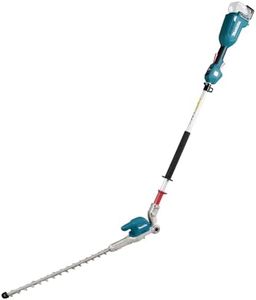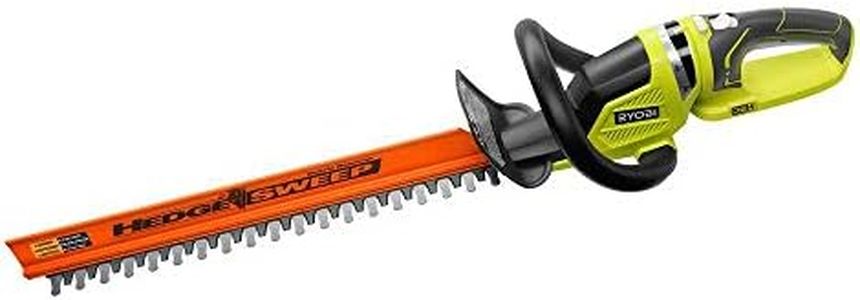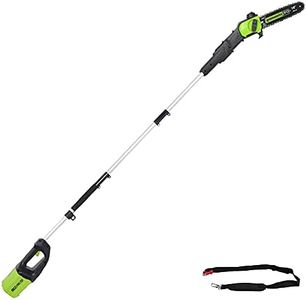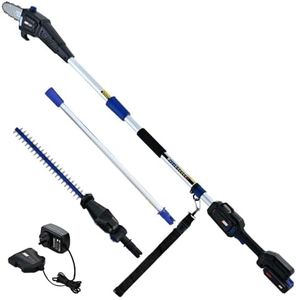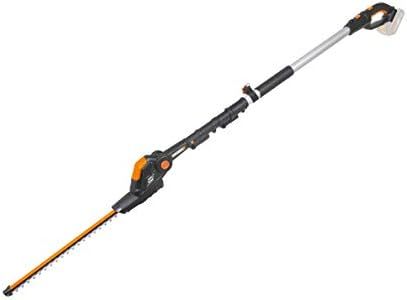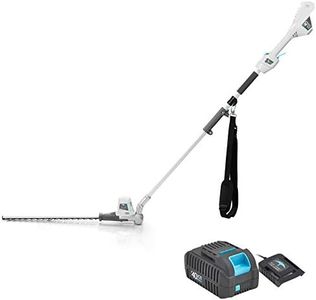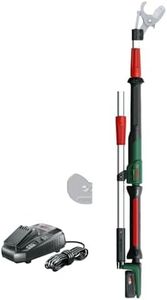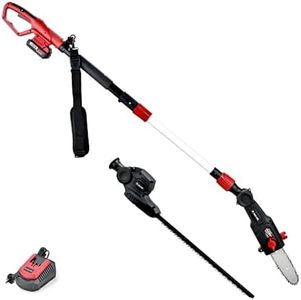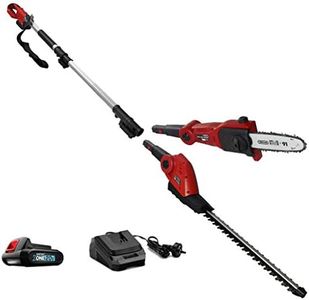We Use CookiesWe use cookies to enhance the security, performance,
functionality and for analytical and promotional activities. By continuing to browse this site you
are agreeing to our privacy policy
10 Best Cordless Pole Trimmer
From leading brands and best sellers available on the web.Buying Guide for the Best Cordless Pole Trimmer
Choosing the right cordless pole trimmer can make maintaining your garden or yard much easier and safer, especially when dealing with tall hedges or hard-to-reach branches. The main goal is to find a tool that’s comfortable, efficient, and suited to the type of work you do most often. Understanding your actual trimming needs, like how high your hedges are or how thick the branches, will help you sort through the options and get a trimmer that won’t leave you frustrated—or worn out.Battery Voltage (V)Battery voltage indicates the power the trimmer can deliver. Higher voltages generally mean stronger cutting performance and the ability to handle thicker or tougher branches. Cordless pole trimmers usually range from about 18V to 40V or more. Lower voltages are good for lighter, routine trimming of soft hedges, while higher voltages are better if you have dense or woody plants to cut. Match the voltage to your yard’s demands: if you rarely tackle large branches, a lower voltage keeps the tool lighter and easier to handle.
Battery RuntimeBattery runtime is how long the tool can operate on one full charge. It’s important because frequent recharging can slow down your work. Runtimes vary widely and can depend on battery capacity and how hard you push the tool. If you have a lot of hedges or larger areas to trim, go for a model with a longer runtime or consider having an extra battery on hand. For smaller gardens or quick upkeep, a shorter runtime might not be an issue.
Pole Length/ReachPole length determines how high you can trim without a ladder. Some models have fixed lengths while others are telescopic and can be adjusted. If you have tall hedges or trees, a longer pole or adjustable reach is safer and more convenient, but keep in mind that longer poles can be heavier and harder to control. Think about the maximum height you’ll need and whether you’ll benefit from an adjustable pole for versatile jobs.
Blade LengthBlade length refers to the cutting bar’s length, affecting how much you can trim in one pass and the type of cutting you can do. Shorter blades (15-18 inches) are lighter and easier for detailed shaping, while longer blades (20 inches or more) can handle more sweeping cuts and taller hedges. Choose a blade length that matches the size and shape of your plants, and consider whether you prioritize easy maneuvering or quick coverage.
WeightWeight is a crucial factor since you’ll be holding the trimmer overhead or outstretched for extended periods. Lighter models reduce fatigue and are easier to control, while heavier models often have more power but can be tiring for long sessions or harder for some users to manage. If you have a lot of trimming to do or prefer a more comfortable experience, prioritizing lighter weight may be smart—even if it means sacrificing some cutting power.
Cutting CapacityCutting capacity tells you the maximum thickness of branches the trimmer can slice through, usually measured in millimeters or inches. If your hedges have thick stems or occasional woody branches, a larger cutting capacity is vital. Standard models usually handle around ¾ inch, while some heavy-duty trimmers can tackle up to an inch or more. Check your plant types: if you mostly have soft, thin growth, a lower capacity is fine, but tougher gardens need bigger cutting ability.
Adjustable Head/AnglesMany pole trimmers offer adjustable or pivoting heads, allowing you to change the angle for trimming tops or sides of hedges without needing awkward positions. This feature is especially useful for neat hedge lines and reaching awkward spots. If you value precise shaping or want to minimize stretching or bending, look for this flexibility in the design.
